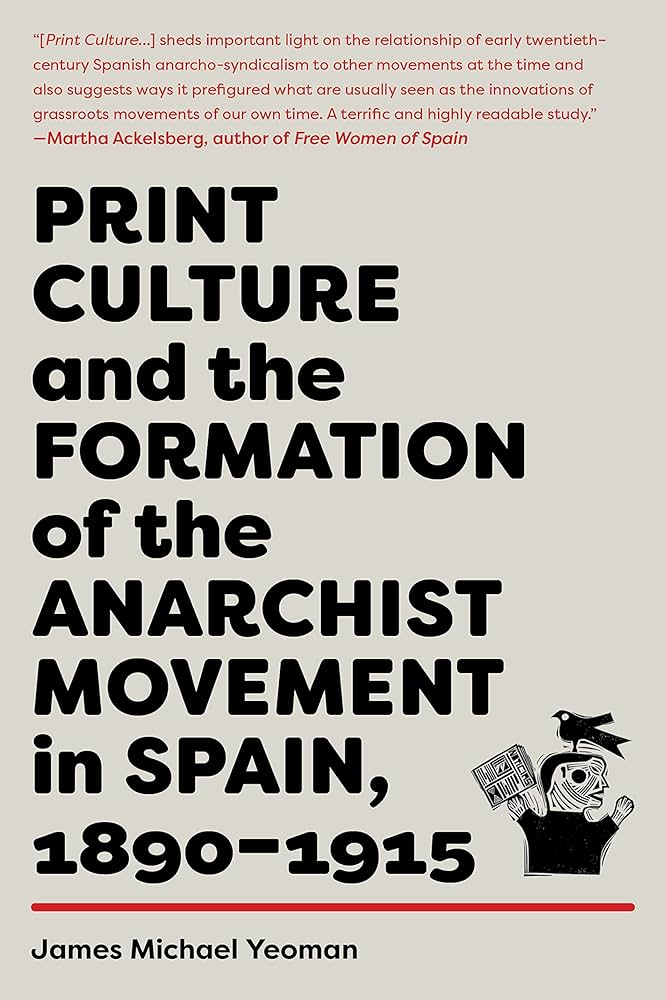In the early 1900s, Spain was at the forefront of the largest anarchist movement in history. According to James Yeoman, author of recently released Print Culture and the Formation of the Anarchist Movement in Spain, 1890-1915, it would not have been possible without the underground press.
His book discusses this pivotal moment in anarchism and its long-lasting effect on independent print. Yeoman, who researched the book while completing his PhD at the University of Sheffield in the UK, situates the tactics of the Spanish anarchist movement as part of ongoing experiments in underground media as early as the 17th century. “This desire to create a movement through engaging with print publication runs from at least the English Civil War and on into the 1960s.”
 Yeoman found his interest in the history of the print movement by accident, after a failed first attempt at his research thesis. “Originally, I was meant to research educational missions in the Spanish countryside. However, after six months of researching, I learned there were no records of this ever occurring, so while I knew it had happened, I had no evidence to base my thesis around. But what I did find was loads and loads of newspapers detailing the Spanish anarchist movement.”
Yeoman found his interest in the history of the print movement by accident, after a failed first attempt at his research thesis. “Originally, I was meant to research educational missions in the Spanish countryside. However, after six months of researching, I learned there were no records of this ever occurring, so while I knew it had happened, I had no evidence to base my thesis around. But what I did find was loads and loads of newspapers detailing the Spanish anarchist movement.”
Yeoman went to Jerez, a city in southern Spain that became an epicentre of the uprising, and dug through their archives. He spent an hour chatting with the archive’s owner, hoping to make a case for his research. “Originally I worried he wouldn’t help me at all,” says Yeoman, “He actually turned out to be way too helpful and kept giving me different things that weren’t relevant.”
It was also during this time that he noticed how the high rate of illiteracy in Spain at the time caused printmakers to use creative methods to spread their message. Anarchist literature would be mass-read in the city squares, from Seville to Barcelona.
Reading these print archives nearly 100 years after the fact showed a fascinating style of newspaper. Yeoman assumed the works were made for aloud reading by the repetition, and enlarging font, which he predicts was made to invite a call and response format, necessary for enacting a powerful movement.
Yeoman’s work takes it place among other works of emerging scholarship aimed at understanding how, as he writes in his concluding remarks in the book, “Bottom-up movements operate across boundaries within and between nations… creating and managing networks of exchange, which gave a practical significance to ideas such as solidarity, unity and organization.”
Yeoman’s novel can be found through AK Press: www.AKpress.org.
